Table of Contents
- Aihole - Origin and History
- Aihole inscription in the Meguti Hill Jain temple
- Durga Temple complex - Aihole
- Sapta Matrikas - Durga Temple complex, Aihole
- Surya Narayana and the famous idol of Sun God
- Lad Khan Temple - The oldest temple of Aihole (AD450)
- Gaudargudi - A “Dravida” style of temple of Aihole
- Huchi Malli Temple - The temple of 'insane Malli'
- Ravan Phadi cave - Houses one of the master pieces of Indian sculpture
- How to reach Aihole?
- How to explore Aihole?
- Is there any option to eat or stay?
Aihole - Origin and History
The vast region below the Meguti hill in Aihole is the valley of the Malaprabha river. The river Malaprabha is described in the ancient Indian legends as the place where Parasurama washed his axe. Parasurama did a holocaust of the Kshatriyas to avenge the death of his father Jamadagni. After his anger was quenched, Parasurama came down to river Malaprabha to wash his axe, which was drenched in the blood of the Kshatriyas. The river turned red instantly. When the saw the blood red river, the local women who was taking a bath at the river shouted “Ayyo Hole” (means “Wow, the River!) The agricultural village came to be known as “Aihole” later on.These may be mere myths, but the remote village in the Northern Karnataka is indeed a wonder land of ancient sculptures and temples. Majority of the temples in Aihole was built during the rule of Chalukya dynasty starting 544 AD. Aihole has a history of thousand five hundred years, however the remote village still seems to be stuck in that time period. There is no trace of development. Villagers still seem to occupy the deserted temples of Chalukya period. [Back]
Aihole inscription in the Meguti Hill Jain temple
As I walked towards the Meguti hill, the first sight was that of a Buddhist Chaitya Gruha (or prayer hall). This cave temple, dug into one of the sides of Meguti hills looks like a two storey building. It was built during 580 AD and stand as a memoir of golden era when Hinduism, Jainism and Buddhism existed in a peaceful harmony.
Aihole was not only the nursery of south Indian architecture, it was also an important center of trade in the Chalukya kingdom. The famous “ayyovole 500” hails from this very place. They are a group of legendary tradesmen. They were famous for their chivalry and courage. They traded elephant, horses, precious stones like diamond, emerald and ruby, spices and incenses to the rest of India and even other countries. Most of them were religious Buddhists.
I started climbing the steps that leads to the top of the Meguti hill, where there is an ancient Jain temple. The Jain temple on top of the Meguti hill in Aihole is an important archeological monument. It was built in 634 AD by Ravikriti, the court poet of Pulakeshin II, the famous Chalukya king.
This small temple houses the famous Chalukya inscription named the “Aihole inscription” or the “Ravikriti inscription”. It was a key artifact that helped the archeologist to decode the history of Chalukyas and even helped them dating the Mahabharata war. This inscription praises Pulakeshin II, who defeated the famous Harshavardhan on the Narmada river valley. It was an important conquest after which the Chalukya kings ruled almost the entire Deccan plateau. Pulakeshin II was praised as the “Dakshinapadeshwara”- the lord of Deccan. The temple itself is small with an idol of Mahavira in the sanctum sanctorum.
Meguti was a forted hill in ancient Chalukyan times. The reminiscent of which is still seen around the perimeter of the hilltop. One can have a panoramic view of Aihole from the Meguti hill. There are almost hundred red sand stone temples strewn all around the village.
According to the historians, Aihole was a famous architecture and sculpture school were thousands of Chalukyan artist learned their ‘temple-making’ lessons. Many of the temples in Aihole are just prototypes, experimenting different styles and techniques of temple making. The Rashtrakuta temples of Ellora, the Vijayanagara temples of Hampi, the Hoysala temples of Halebeedu and Belur – all follows the Aihole school with small localizations or improvements. [Back]
Durga Temple complex - Aihole
Even though there are around hundred temples in Aihole, the most important ones are situated in a protected complex. Archeological Survey of India(ASI) maintains this lovely complex where there are a number of temples worth a visit. Durga temple, ‘Badigarugudi, Lad khan temple, Guadargudi, Chakragudi, Trikudeshwara temple are some of them. Before ASI took over the temples, the villagers were staying inside them. Each temple was known by the name of its occupant. Hence most of the Aihole temple have strange names. For example, Lad Khan was a Muslim saint who used to live in the temple. Hence the temple came to be known as “Lad Khan temple”. This must be the only Hindu temple in India, known by a Muslim name.
The most elaborate and important temple in this complex is the ‘Durga’ temple. It is not a temple dedicated to Goddess Durga as the name suggests. This temple was built in AD 748 and was dedicated to God Surya (the sun God). Later, with the changing ideologies of Hinduism, the temple was re-dedicated to God Vishnu. There was a small watchtower on top this temple – locally known as Durg (or Fort). The locals called this temple ‘The Durg temple’ or later it was known as Durga temple.
The shape of Durga temple is very intriguing. It resembles the structure of Indian parliament house. Or at least a crude form of it. The guide called it the ‘Gajaprushta Akriti” means, the form of this temple resembles the backside of an elephant!
The oval shaped Durga temple is built on a raised platform which is almost four feet high. There are steep steps leading to the front portico of the temple. It is highly ornate with carved pillars and sculptured ceiling. One of the sculptures of particular importance is the seven headed serpent on the ceiling. It is the carving of “Adi Shesha” the seven hooded serpent who is an attendant of Lord Vishnu. The serpent holds a basket of flowers and has a delicately carved body.
As we pass the first portico, we enter into the Mukha Mantapa or the welcome chamber of the temple. The door that leads into this chamber is also very interesting. It is carved to such an extent that, one might doubt it is wood rather than stone. There are five layer of designs on this door frame. Each of them is a well-known pattern in Chalukya sculptural school. The ‘Naga-Shakha’ is the design of serpents, ‘Pushpa -Shakha’ – the floral design, ‘Kumbha-Shakha’ – the design with overflowing vessels to show prosperity, ‘Manava Shakha’ – the design that features human beings, ‘Makara Shakha’ – the design shows crocodiles. The door frame in itself is nothing less than a sculptural master piece.
As I entered into the Durga temple, my eyes struggled to adjust with the darkness inside. There is no proper lighting inside the temple. The ceiling of the temple is in gradual ruin as water seep through the roof. The sculptures of beautiful beings like Apsaras have partially disfigured. One drawback that I have observed in the Chalukyan temples is the insufficient light. The perforated windows don’t allow much light.
In ancient times, the temple might have been properly illuminated. Also, my theory is that, the human beings from the medieval time might have had better light sensitivity than us. Due to the constant use of tablets, phones and computer our light sensitivity must be very low. Hence we don’t feel there is enough light inside the ancient temples.
I always carry a torch on my archaeological expeditions. Here it came very handy. We entered into the inner circumambulatory path known as the “Pradikshina Path”. The inner Pradikshina Path is built around the oval shaped sanctum sanctorum of the temple, which once had the idol of the Surya. As we pass through the unlit path, one can get a closer look at the oval shaped structure of the sanctum. It is indeed a wonder that in an ancient age where there was no motorized machinery to cut the rock, the masons have bent the rock with such a perfection. The inner sanctum is now devoid of any idol. It might have been destroyed during the Adil Shahi attack in 1565.
One can also find a recurring symbol of Chalukyan art, the Keerthi Mukham on many of the pillars inside the Durga temple. We exited the inner chamber of the Durga temple and entered into the outer corridor.
The oval shaped outer corridor that surrounds the inner Pradikshina Path and sanctum is a specialty of the Durga temple. Usually, Indian temples would have a single circumambulatory path around the inner sanctum. The Durga temple have two. The outer Pradikshina Path is an ancient art gallery. It displays various sculptures of high quality in the equally spaced niches cut into the wall. It must be the first art gallery anywhere in the world. The Europeans conceive the idea of art gallery in the 12th century AD during the renaissance. However, the Indian sculptures have experimented it 500 years earlier, here in Aihole.
There are sculptures with varying themes displayed in this gallery. There are Gods and common folk. For example, there is a sculpture of a married young women who is carrying her child in one hand and accompanied by her husband. The ancient ornaments and cloths are very clear. She is wearing a “Mangal Sutra” – an ornament around her neck that indicates her married status. She is also wearing a “Kanta Sutra” or an ancient style necklace. Her attire reaches just above the knees and it reminds us of miniskirts of the modern world.
 |
Another interesting artifact in the Durga temple is the highly perforated windows. There are around twenty windows around the oval shaped walls. Each of them have a different design. They are not even resembling each other. Our guide told that as Aihole was an experimentation lab of the Chalukyas, they tried different designs over here. Whichever the king liked, it was replicated in other temples across the country.
The Durga temple stands on a 3 feet foundation the walls of which are also richly carved with themes from Ramayana. One of the scenes that attracted me most is from Ramayana. Sree Rama, Seetha and Lakshmana on their exile, reached the Sarayu river. They were worried as they did not find a wat to cross the river. “Guha” – the master sculptures of the Gods constructed a boat for them and the happily sailed across River Sarayu. This scene is depicted in the wall panel.
After spending a few hours in Aihole, one thing that amazed me most was our tour guide Shivanand! He was born into a remote village named Siddanakkolla in the Bagalkot district of Karnataka. He earned a degree in history and turned into a tourist guide. His knowledge of Karnataka history and that of India in general is impressive. His English is impeccable and he says he has never left the Bagalkot district ever! [Back]
Sapta Matrikas - Durga Temple complex, Aihole
We exited the Durga temple discussing about the excavation activities in Aihole. The entire Durga complex was covered in 4 feet of earth until 1958, when the archaeology department of India did an extensive excavation under the guidance of Dr. S. R . Rao – a veteran in Indian archaeology. Many sculptures have been recovered from underground later on. The archaeological museum of Aihole displays many of them. Unfortunately, we could not cover the museum as it was the weekly holiday.
There is an interesting sculptural panel placed near the entrance of the Archaeological museum. It is the depiction of “Sapta Matrikas” – the women forms of the main Hindu Gods. It was very interesting as I have never heard of such a cult. The Sapta Matrikas include - Brahmani, Vaishnavi, Maheshvari, Indrani, Kaumari, Varahi, Chamunda and Narasimhi.[Back]
Surya Narayana and the famous idol of Sun God
We moved to the next temple in the complex. It is a small temple with modest sculptures. However, it has immense archeological importance due to the ancient idol present inside the sanctum. It is the temple of Surya Narayana or the Sun God. There are not many Sun temples in India apart from the famous on in Konark. However, Konark does not have an idol. The Surya idol inside this small temple might probably the oldest Surya sculpture in India.
It is made in green granite and almost five feet tall. All the details are carved clearly depicting Usha and Sandhya – the wives of Surya, the 9 planets around him, his chariot drawn by seven horses etc. The alignment of the sanctum is also a wonder. There are no windows in Surya temple, however due to the right direction, the light directly comes and falls on the idol. It is nothing less than an architectural marvel. You can see this effect very clearly in my photograph.[Back]
Lad Khan Temple - The oldest temple of Aihole (AD450)
Next we moved on to the “Lad Khan” temple. It is one of the ancient temples in South India named after a former occupant of the temple named “Lad Khan”. He was a Muslim saint. Even though there are no clear archeological evidences, this temple is believed to be built in AD 450. The construction of its roof is of particular interest. Huge rock pieces that resembles wooden logs are placed on top of the roof.
Archeologists suggest that the ancient architects did not have any prior experience in building a temple and neither they had exposure to other temples. So, they constructed it in form of a community hall in the lower floor and a small sanctum in the upper floor. There is a monolithic ladder leading to the upper sanctum. The historians also believe that the famous business group of Chalukyan times – the Ayyovole 500- might have used this temple as a public meeting place.[Back]
Gaudargudi - A “Dravida” style of temple of Aihole
Right next to the Lad Khan temple stands the “Gaudargudi” at a lower elevation. In front of it, we can see two miniature temples. Our guide told me that they are the experimental temples built by the sculpture students in Aihole. As I mentioned earlier, Aihole in ancient times was a famous university of architecture and sculptures. It was similar to the ancient Indian universities like Nalanda, Takshashila and Kancheepuram.
Gaudargudi is a good example of the “Dravida” style of temple architecture that prevailed in south of Narmada river in ancient days. Another style of temple architecture is called “Nagara” style. The Nagara style was popular in North India. One of the prime examples of Nagara style architecture is the Konark sun temple in Puri. According the Dravida style, the roof of the temple is low and slopping. The construction is quite simple. However according to Nagara style, the pinnacle or Shikhara of the temple is built in gradually diminishing multiple layers. Usually they are intricately carved.
The later Chalukyan architecture clearly shows influences from the Nagara style. It might be due to the military expedition of Chalukyan kings to the norther territories of India. Remember the second Pulakeshin’s military expedition and defeating Harsha Vardan on the banks of River Narmada.
There are many other smaller temples in Durga complex. The “Chakragudi” is a temple built with Nagara style Shikhara where as another smaller temple nearby named Badigarugudi is built in complete Dravida style.[Back]
Huchi Malli Temple - The temple of 'insane Malli'
After having a glance at all the temples, we exited Durga temple. The next destination is almost a kilometer away from the Durga temple. It is known as the temple of “Huchi Malli”. It literally translates to “The temple of insane Malli”.
According to the legends, an insane women named Malli stayed inside this temple. Huchi Malli temple is of particular importance due to two reasons. Huchi Malli temple is also considered as a complete temple with all the essential elements of an Indian temple. It has a Nandi in front of it (Vehicle or Vahana of main deity), entrance hall (Mukha Mantapa), Main hall (Sabha Mantapa), Antechamber (Antarala), Sanctum, circular path (Pradikshina Patha) and a Nagara style pinnacle on the roof (Shikhara). It is only one surviving temple in Aihole where all these elements come together.
This temple has a rare sculpture of Subramanian or Karthikeya – the son of Lord Shiva. It is not very common in the Chalukya temples.[Back]
Ravan Phadi cave - Houses one of the master pieces of Indian sculptures
Our next stop was a small cave temple known as “Ravan Phadi” located near the Huchi Malli temple.
Even though it stands unnoticed in a corner of Aihole, it contains one of the master pieces of Indian sculptures. It is known as the “Dashabhuja Nataraja” or “The ten handed dancing Shiva”. The sheer beauty and perfection of Shiva, dancing with consort Parvati, sons Ganesh and Karthikeya accompanied by Sapta Matrikas is breathtaking. Standing in front of this master piece is a moment of great joy for those who love art and sculptors.
This small cave temple was built during 540 AD and it is considered to be the predecessor of the famous Badami cave temples. Apart from the ten handed Shiva, this cave temple has multiple sculptures including “Durga slaying demon Mahisha” and “Varaha rescuing the Bhumi Devi (Earth goddess).
Another interesting sculpture in the Ravan Phadi cave temple is the sculpture of Lord Shiva and Parvati along with Bhagiratha. The sage Bhagiratha is doing a penance to bring the holy river Ganges from heaven to earth. On top of Lord Shiva, there are 3 figures representing the Rivers, Ganga, Yamuna and Sarasvati.[Back]
 |
How to reach Aihole?
The nearest town to Aihole is Badami. Aihole is situated 35km from Badami. There are Karnataka Transport Public buses ply between Badami and Aihole, however they are not very regular. It is best if you have your own transportation facilities. Typically cars charge around 1500 Indian rupees for one day and auto rickshaw (tuk-tuk) takes around 600 Indian rupees per day. [Back]How to explore Aihole?
It is good to explore Aihole in your own vehicle. If you can manage it, walking around is the best option. There are at least 125 temples in this remote village. It would be good to engage an accredited guide. Guide typically charge between 300-500 depends on the time.[Back]
Is there any option to eat or stay?
As far as I could explore, there are no good restaurants in Aihole. I was not satisfied with the cleanliness of the ones that existed. There are no hotels for stay. The best option is to stay in Badami and make a one day trip to Aihole[Back]
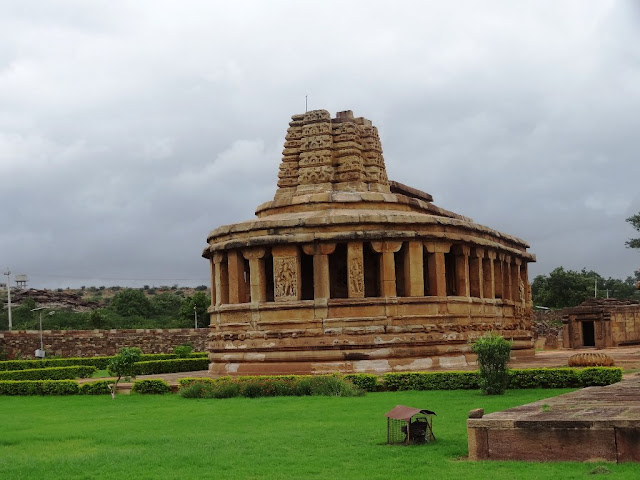

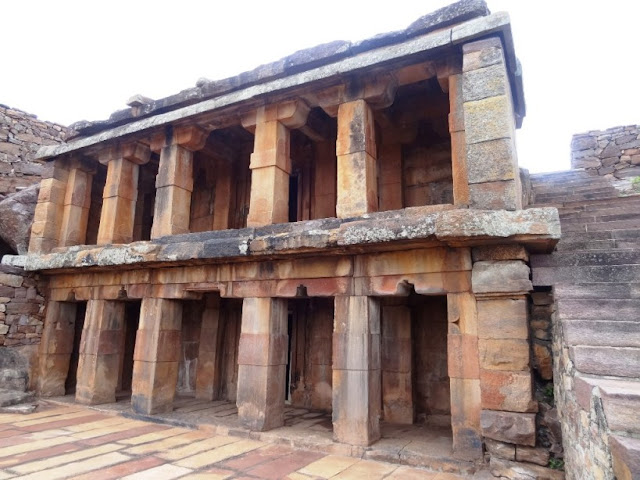






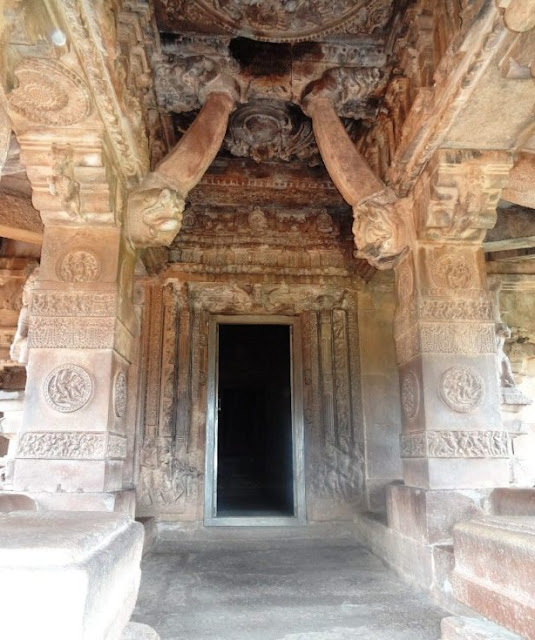



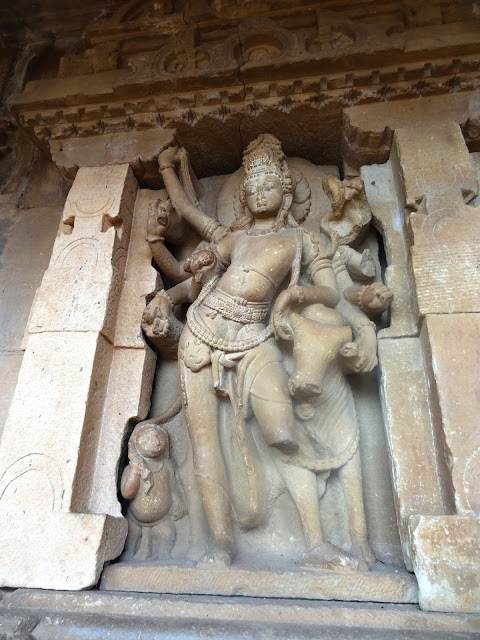

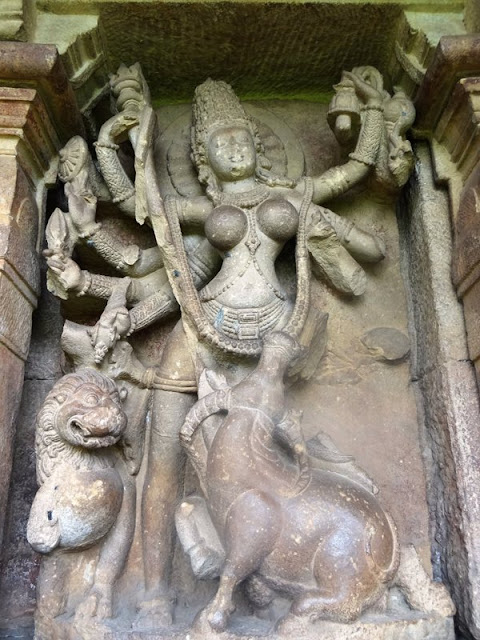










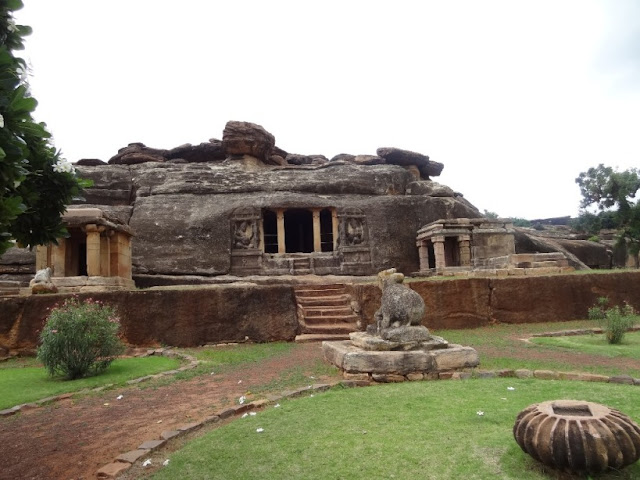


D19572AF4F
ReplyDeleteGörüntülü Şov Whatsapp Numarası
Ücretli Show
Telegram Show Kanalı
Post a Comment